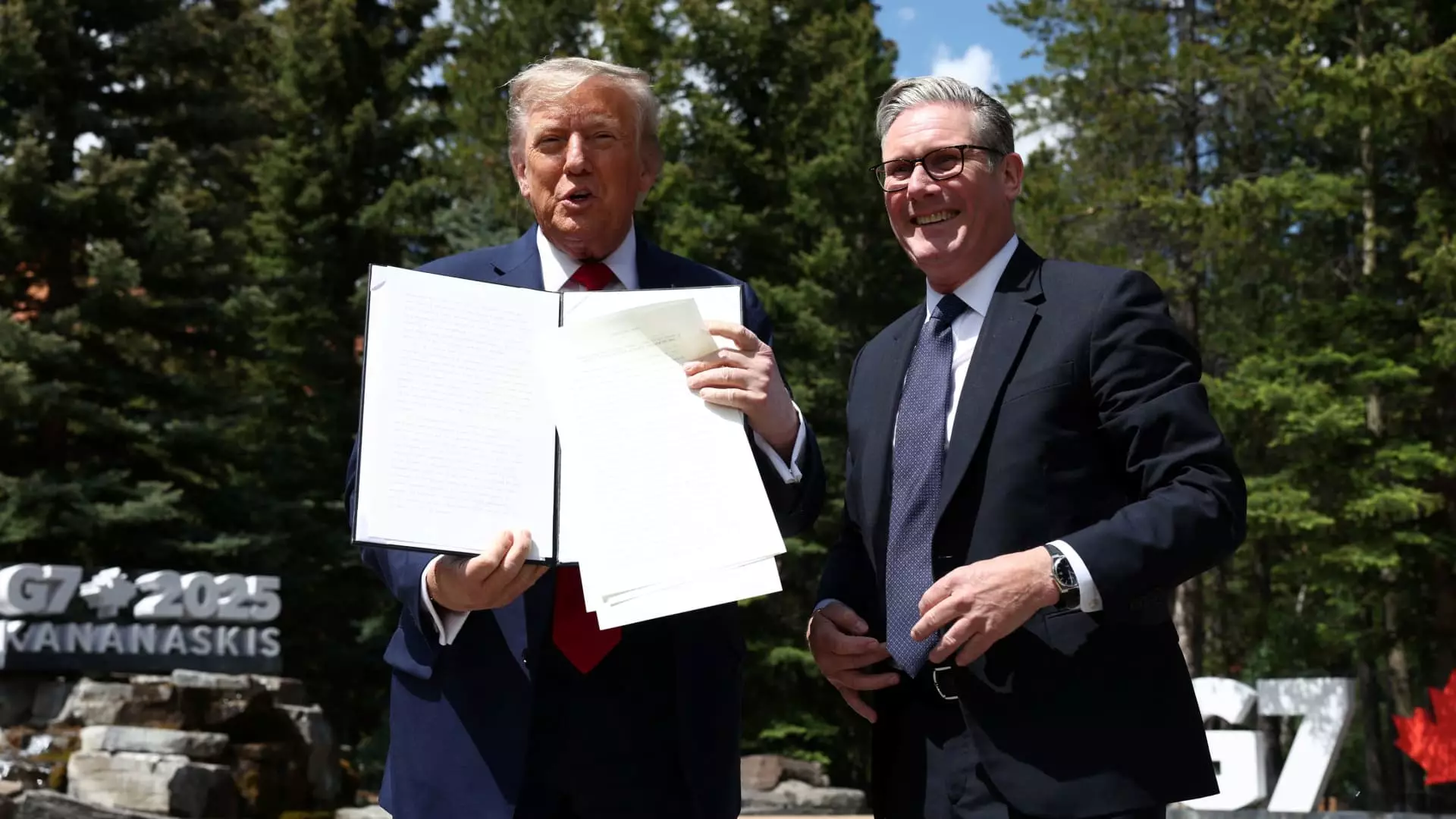Since President Donald Trump enacted a sweeping wave of tariffs earlier this year, many have hailed recent trade deals as signs of economic resilience and stability. However, beneath this optimistic veneer lies a troubling reality: the so-called progress may be nothing more than an illusion. While equities have soared to record highs, this rally masks deeper systemic vulnerabilities rooted in the fragile foundation of these agreements.
The narrative that trade stability has been achieved is fundamentally flawed. Traders, investors, and policymakers are lulled into complacency by short-term market recoveries, yet the underlying negotiations are riddled with ambiguity. Many of the deals signed lack concrete details, rendering them more aspirational than operational. For instance, agreements with nations like Indonesia and the Philippines remain vague, retaining the risk of collapse once renegotiations or legal challenges surface. This disconnect between rhetoric and reality exposes a dangerous optimism born out of a desire for market calm rather than genuine resolution.
Furthermore, the recent diplomatic dance with the European Union exemplifies this precarious facade. The touted deal, featuring a 15% tariff on European imports, was met with severe backlash from EU officials who deem it unbalanced and insubstantial. This misrepresentation fosters a false sense of progress, creating a complacency that could easily unravel should the finer points of these accords prove unworkable or contested.
Legal and Institutional Limitations: The Achilles’ Heel of U.S. Trade Authority
At the core of the tariff saga lies a fundamental weakness: the legal authority under which tariffs are imposed. The Trump administration’s reliance on the International Emergency Economic Powers Act of 1977 (IEEPA) has come under scrutiny, with courts questioning whether the president possesses the constitutional authority to unilaterally enact such broad tariffs. Legal challenges threaten to overturn or invalidate these trade measures, turning what appears to be policy into a legal gamble.
The judicial battles reflect a critical weakness in the executive’s expansive approach to trade warfare. If courts side against Trump’s interpretation of IEEPA, many of the tariffs and resultant agreements could become null and void overnight. This potential reversal underscores the inherent instability of relying on executive overreach rather than a clear, legislated framework for trade policy. Moreover, the administration’s seeming dismissal of judicial skepticism and threats to bypass the courts point to a dangerous willingness to gamble with the nation’s economic stability for temporary leverage.
Adding to this uncertainty, there exists a legal fallback—Section 338 of the Tariff Act of 1930—that could theoretically be invoked to justify tariffs, albeit under a different legal basis. Yet, this legislation’s use would only further entrench trade policy madness, risking a perpetual cycle of legal battles and policy reversals that undermine long-term confidence in the U.S. trade system.
Negotiation Breakdown and the Perpetual Game of Political Chess
Another glaring flaw in Trump’s trade strategy is the persistent ambiguity surrounding the details of the agreements. Negotiations with key partners like China, Canada, and Mexico have yet to produce concrete, enforceable terms. Instead, the process appears driven by political posturing and brinkmanship, which prolongs uncertainty in the global marketplace.
Notably, the delay in finalizing agreements with major players such as China underscores how fragile and unpredictable the process really is. The recent postponement of additional tariffs on Chinese imports reveals how diplomatic optimism can abruptly turn into pessimism with one misstep or unexpected summits. The upcoming meeting between Trump and Xi Jinping has become a wild card, capable of either sealing a deal or igniting new trade conflicts.
This perpetual negotiation limbo creates an unstable environment that humanizes the naive belief that tariffs can be reliably used as strategic leverage. Instead, it highlights how political self-interest and tactical brinkmanship dominate the process, leaving the international trade landscape volatile and unpredictable.
Economic Realities vs. Market Perception: The Costly Disconnect
Despite the rhetoric of resilience, evidence suggests the broader economic impact of these tariffs has been underestimated or ignored by Wall Street. While markets are resilient and have recently hit new highs, the real costs—namely, the potential drag on GDP and increased consumer prices—are often pushed aside in the rush for profit.
JPMorgan’s estimates project a mere 1% decline in GDP attributable to tariffs, a figure that superficial analyses may accept as negligible. Yet, this overlooks the broader picture: tariffs distort supply chains, inflate costs for importers, and threaten to stifle innovation through retaliatory measures. The market’s optimistic pricing of recession risk—plummeting from 70% in May to a mere 10%—may be an overreaction driven by speculation and short-term sentiments, rather than genuine economic strength.
The so-called “tariff premium” is a classic example of headline-driven markets ignoring long-term consequences. Investors bet on the stability of the current trading landscape, but they often fail to account for the hidden costs and the potential for a sudden economic shock if tariffs escalate or legal challenges succeed.
The “Trump Factor”: An Unquantifiable Wild Card
Finally, perhaps the most significant and unmanageable risk in this entire scenario is President Trump’s unpredictable approach. His penchant for sudden policy shifts and his disregard for legal or diplomatic norms introduce an element of chaos that markets and trading partners have come to accept but do not truly understand.
His willingness to pivot, delay, or rescind agreements without notice elevates the risk of destabilizing the entire system. The “Trump factor” represents a volatile wild card—an unpredictable force that can upend assumptions, threaten alliances, and derail negotiations overnight. For center-right liberals who favor a balanced, pragmatic approach to governance, this randomness is both a challenge and a danger. It reinforces the need for a more disciplined, rules-based trade policy, rather than one driven solely by executive whim.
While some might hail Trump’s approach as bold and decisive, it ultimately breeds uncertainty—something economic actors should neither ignore nor underestimate. The risk of impulsive actions, legal setbacks, or sudden policy reversals looms large, threatening to destabilize the fragile gains made this year and jeopardize long-term economic stability.

